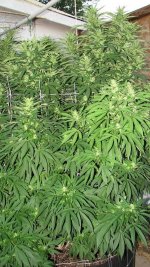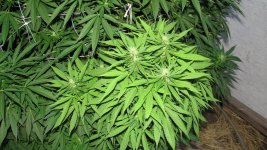Trying to figure out what the fuck is going on with some of my large gals. im seeing spotting yellowing with black dots on leaves. only on 1 or 2 arms of the plants while the rest are healthy as can be... not sure whats going on... far enough along where i dont believe it will be an issue but id still like to fix the problem or at least be able to identify it.
Its been getting real cold at night def got a frost last night already and these babies are sitting in bog water so im wondering if it could be from the temp of the water thats causing the problem. its only happening on 2 plants... they have all got the same feeding any help would be great. thanks
Its been getting real cold at night def got a frost last night already and these babies are sitting in bog water so im wondering if it could be from the temp of the water thats causing the problem. its only happening on 2 plants... they have all got the same feeding any help would be great. thanks








